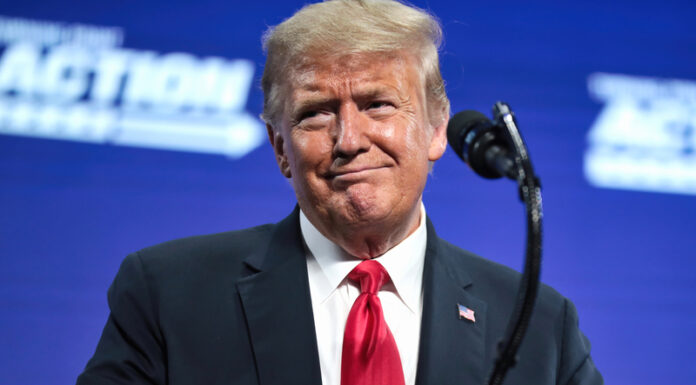Former President Donald Trump drew intense backlash on Sunday after posting on Truth Social that the Watergate scandal was an “illegal hoax,” marking another effort to challenge widely accepted historical records. The post, seemingly intended to attack Senator Adam Schiff, implied the notorious political scandal that forced President Richard Nixon to resign was fabricated.
Trump shared this claim on October 12, 2025, at 12:38 a.m. as part of a wider social media tirade that also included false statements about the January 6, 2021, Capitol attack. In that same post, he alleged, “THE BIDEN FBI PLACED 274 AGENTS INTO THE CROWD ON JANUARY 6,” despite the fact Joe Biden was not yet president and would only take office on January 20, 2021.
During the Capitol riot, Trump was the sitting president. Nonetheless, he shifted blame to his predecessor and what he called the Biden FBI for the assault on Congress. At the time, Christopher Wray—Trump’s own choice for FBI director—was leading the bureau, which officially labeled the events as domestic terrorism.
Trump’s version of January 6 sharply conflicts with the documented facts. That day, speaking at his Stop the Steal rally in Washington, he told supporters to “fight like hell” against what he claimed was a stolen election. He urged them to march to the Capitol, where lawmakers were certifying Biden’s victory in the 2020 election. Shortly after, an armed mob attacked and breached the building.
In December 2024, the Justice Department concluded there was no evidence of FBI involvement in the Capitol unrest, which left multiple people dead and dozens of police officers injured. Several defendants from that day testified that they acted in direct response to Trump’s exhortations.
A federal grand jury charged Trump in 2023 with four felony counts tied to his attempts to overturn the 2020 election results. The case was dismissed in November 2024 after he returned to the presidency, following the Justice Department’s policy of not prosecuting a sitting president. Even so, Trump has consistently described January 6 as a “day of love” and celebrated the rioters as patriots.
Trump has long pushed baseless theories about January 6. On September 27, he claimed online that the FBI had covertly planted 274 agents in the crowd before and during what he called the “January 6 hoax,” suggesting they acted as provocateurs rather than law enforcement officers.
Once back in office for his second term, Trump issued sweeping pardons to everyone involved in the Capitol attack, including those convicted of violently assaulting police with weapons and chemical sprays. The pardons covered individuals facing serious charges connected to the insurrection.
His remarks on Watergate mark yet another attempt to recast historical events. The break-in occurred on June 17, 1972, when five men were caught inside the Democratic National Committee headquarters at Washington’s Watergate complex. The investigation exposed a network of political misconduct and abuses of power that culminated in Nixon’s resignation on August 9, 1974.
Political analysts highlighted the timing of Trump’s latest historical revisionism, arriving as he continues to face scrutiny over his role in January 6 and his broader stance toward democratic norms. Claims of FBI involvement have been repeatedly discredited through law enforcement inquiries and court rulings.
Trump’s tendency to put forward unsupported interpretations of history extends far beyond January 6 and Watergate. Throughout his career, he has often disputed established facts and advanced alternative accounts that reinforce his political narrative, frequently without offering any proof.
These recent Truth Social posts illustrate Trump’s ongoing use of social media to circulate false information about major political events. His assertions regarding both Watergate and January 6 stand in direct opposition to extensive evidence and testimony gathered from numerous official investigations by law enforcement agencies and congressional committees.








